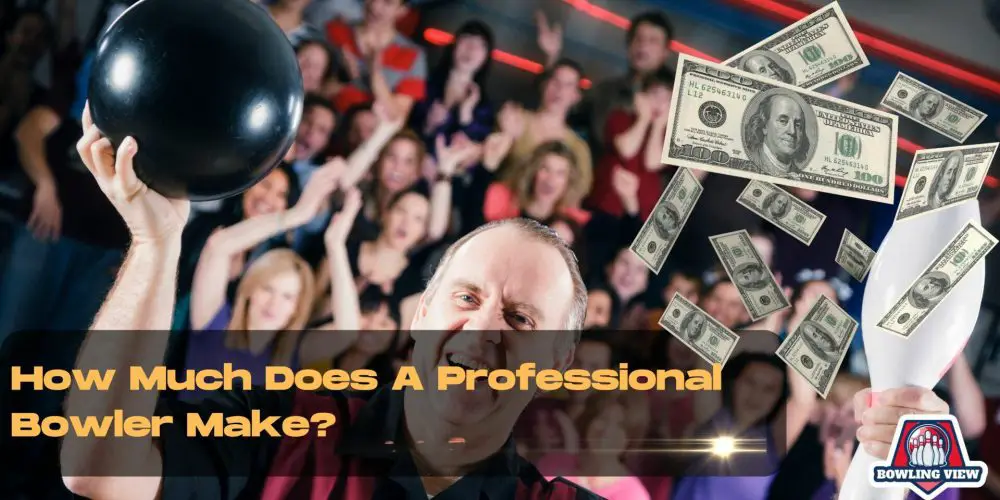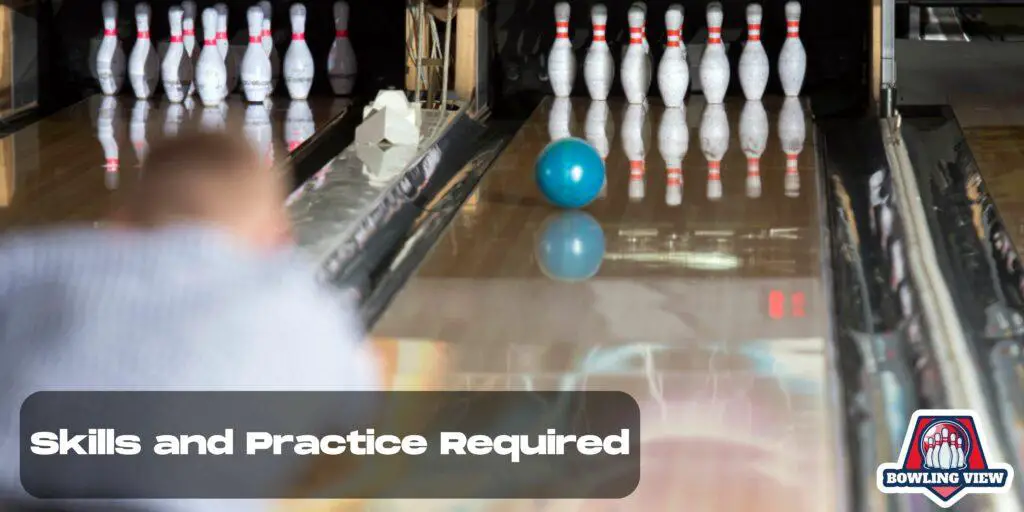Many often wonder, ‘How Much Does A Professional Bowler Make?’ Professional bowling has long been a captivating sport for many, with the combination of skill, precision, and strategy capturing audiences’ attention. In the world of sports, salaries can vary greatly, and it may come as a surprise to learn what professional bowlers earn.
While professional bowlers may not make as much as athletes in more mainstream sports like football or basketball, it’s important to remember that the earning potential in this niche is still significant. The financial rewards for top-performing bowlers come from a combination of tournament prize money, endorsements, and sponsorships.
The Professional Bowlers Association (PBA) organizes numerous tournaments throughout the year, with varying levels of prize money available for the players.
Depending on the event and the bowler’s performance, earnings can differ greatly. In the following sections, we will explore these various sources of income and break down the earning potential within the world of professional bowling.
Professional Bowling: An Overview
Popularity of Bowling
Bowling is a popular recreational sport enjoyed by millions of people across the United States and around the world.
It is a versatile and accessible activity that can be played by people of all ages and skill levels. Professional bowling, on the other hand, is a competitive and highly skilled version of the sport. It requires dedication, precision, and significant practice to reach the highest levels.
The Professional Bowlers Association (PBA)
The Professional Bowlers Association (PBA) is the main organization responsible for the promotion and organization of professional bowling events. Established in 1958, the PBA organizes various tournaments and leagues, including the PBA Tour, PBA50 Tour, and the PBA Regional Tour.
The PBA aims to elevate the prestige and recognition of professional bowling, providing opportunities for talented bowlers to compete for financial rewards and recognition.
In terms of financial earnings, professional bowlers make a wide range of salaries. The top bowlers can make six-figure incomes, while others may earn much less, relying on sponsorships and side jobs to supplement their income. For example, according to the PBA’s statistics:
- In 2019, the highest earner made $289,290, while the average earnings of the top 50 players were $64,287.
- In 2018, the highest earner made $155,218, and the average earnings of the top 50 players were $45,510.
It’s important to note that these figures represent earnings from tournament winnings, and do not include additional income from sponsorships, coaching, endorsements, or other sources. The financial landscape of professional bowling is continuously evolving, with new opportunities and challenges arising for bowlers to navigate.
Income Sources for Professional Bowlers
Tournament Earnings
The primary income source for professional bowlers is from tournament winnings. Bowlers on the PBA (Professional Bowlers Association) Tour compete throughout the year for cash prizes that vary depending on the event’s prestige and size.
The prize money awarded to the winner of a bowling tournament can range from a modest few thousand dollars to an impressive six-figure amount for more prominent events.
However, it’s essential to consider living and travel expenses, as winning a tournament doesn’t necessarily translate to pure profit. Years of experience on the PBA Tour can also impact bowler’s overall earnings.
Sponsorships and Endorsements
Sponsorship deals are a significant part of the income for a successful professional bowler. These deals can range from a few hundred to thousands of dollars, depending on the companies involved and the visibility of the athlete.
Companies typically provide financial support to bowlers in exchange for wearing their logo during match play or in other public appearances. Additionally, endorsement deals grant a bowler the right to promote specific products, such as bowling equipment, in commercials and advertisements, leading to an additional income stream.
Exhibitions and Appearance Fees
Aside from their competitive endeavors, professional bowlers can supplement their income by participating in exhibitions, clinics, and other promotional events. Whether they are conducted locally or in cities like New York, these engagements often compensate the bowler with a fixed payment.
Furthermore, appearance fees can be a consistent income source for popular bowlers who have established a positive reputation in their respective communities and beyond.
Paid Advertisements
Another way for professional bowlers to monetize their skills and public image is through paid advertisements. Companies might seek their endorsement for a range of products and invest in commercials and advertising campaigns featuring the athlete.
Depending on the scope and reach of the advertisement, this method can generate a substantial income. Bowlers with a higher net worth and a strong public standing are more likely to attract lucrative advertising deals, which contribute to their overall earnings.
In conclusion, when investigating ‘How Much Does A Professional Bowler Make?’, it’s clear that professional bowlers have multiple avenues to generate income.
Their earnings mostly come from tournament winnings but also include sponsorships and endorsement deals, appearances and exhibition events, and paid advertisements.
The actual amount a bowler makes can vary based on factors like their years of experience, overall success, and public standing.
Earning Potential of Top Pro Bowlers
Highest-Paid Bowlers
Top pro bowlers have the potential to earn substantial amounts of money through various sources. Prize pools at prestigious PBA tournaments offer substantial winnings for the successful players.
For instance, the PBA Player’s Championship has a total prize pool of $250,000. Other sources of income include sponsorship deals, bowling league salaries, endorsements, and participation in exclusive bowling exhibitions.
While the earning potential of top pro bowlers is less compared to other professional athletes, some bowlers manage to make enviable earnings. The all-time leader in total PBA earnings is Walter Ray Williams Jr., who has amassed over $4.9 million throughout his career. Another notable example is Norm Duke with career earnings of over $3.7 million.
According to ZipRecruiter, the average annual income for professional bowlers varies significantly depending on their performance and location. New York City, for instance, offers higher salaries for bowlers compared to other cities.
PBA Player of the Year
Being crowned the PBA Player of the Year has a significant impact on a bowler’s career and income potential. When a bowler is recognized for his outstanding performance, they gain not only increased prominence but also more lucrative endorsement deals and potentially higher tournament prize pools.
Such an honor often leads to a rise in viewership and fans, which in turn generates more interest in the sport and indirectly increases the demand for the players’ services.
Notable Bowlers
Throughout the history of PBA, several bowlers have made a significant impact on the sport, both in terms of performance and financial success. Don Carter, for example, was the first bowler to sign a $1 million endorsement deal back in the 1960s with bowling ball manufacturer Ebonite.
Pete Weber is another iconic bowler who has enjoyed great success on the lanes and financially. Weber has accumulated over $4 million in career earnings and consistently ranks among the best bowlers of all time.
In addition to male bowlers, female bowlers have also made strides in the sport. Although the earnings of female bowlers tend to be comparatively lower than their male counterparts, they continue to break barriers and attract more viewership, which can positively impact their earning potential in the future.
In conclusion, the earning potential of top pro bowlers depends on various factors, including performance, location, sponsorships, and more. These individuals have not only made a name for themselves in the sport but have also garnered substantial financial success throughout their careers.
The Journey of a Professional Bowler
Skills and Practice Required
To become a professional bowler, an individual needs to master a specific set of skills and dedicate numerous hours to practice.
The foundation of a professional bowler’s ability lies in their technique, accuracy, and consistency. Achieving this level takes years of experience and regular practice to hone their bowling ability.
From Bowling League to PBA
Aspiring professional bowlers usually begin their journey by joining local bowling leagues. These leagues are stepping stones to gaining the valuable experience needed to make it to the next level.
fter reaching a certain skill level and consistently producing high scores, the next step is obtaining a PBA membership. There are qualifications and performance requirements for joining the Professional Bowlers Association (PBA), such as averaging a minimum score of 200 in a competitive league.
Becoming an Independent Contractor
Once a bowler successfully joins the PBA, they transition into the role of an independent contractor. This means that professional bowlers are responsible for creating their schedules and managing their expenses, such as travel and equipment costs.
As for earnings, the average annual salary for a professional bowler varies greatly. Many professional bowlers make modest earnings, while a select few accomplish the feat of making big money in the sport.
According to the PBA, the average yearly salary ranges from $20,000 to $100,000, with the top earners exceeding $200,000. These numbers do not include additional income earned through sponsorships, endorsements, and coaching obligations.
For more information on player earnings, read this page>> PBA Earnings
In conclusion, the journey to become a professional bowler requires dedication, skill, and perseverance.
From investing time in perfecting one’s bowling ability to navigating the complex financial aspects of being an independent contractor, the road to a career in professional bowling is challenging yet rewarding for those who commit to the craft.
Challenges and Expenses of Pro Bowling
Travel and Living Expenses
Professional bowlers face multiple challenges, including covering their travel and living expenses while participating in the Professional Bowling Tour. Competitions may be held in various cities, leading to high transportation costs for flights, accommodations, and meals. Some bowlers receive sponsorship deals to alleviate these expenses; however, not all bowlers have this financial support.
In addition to travel costs, professional bowlers must also invest in their equipment, including shoes and multiple bowling balls, which can be expensive if they need to be replaced frequently. Maintenance and practice fees at bowling centers also add to their regular expenses.
Balancing Multiple Income Streams
Another challenge faced by professional bowlers, especially for those who are not at the very top of the rankings, is balancing multiple income streams. A majority of professional bowlers need to rely on additional sources of income to support themselves, as tournament winnings alone might not be sufficient.
There is a significant pay gap between male and female bowlers, with female bowlers generally earning less. Consequently, female bowlers may have to rely even more heavily on other income streams. Some potential supplementary sources of income for professional bowlers include:
- Tips from coaching gigs or clinics
- Appearance fees in local tournaments or events
- Sponsorship deals from bowling equipment manufacturers or related businesses
- Owning a pro shop or other bowling-related business
These additional income streams can cause some difficulties in terms of balancing multiple responsibilities, as professional bowlers need to manage their time, energy, and focus between competing, practicing coaching, and business responsibilities.
However, if they are able to successfully juggle these tasks, it can help support their professional bowling ambitions and enable them to continue pursuing their passion for the sport.



